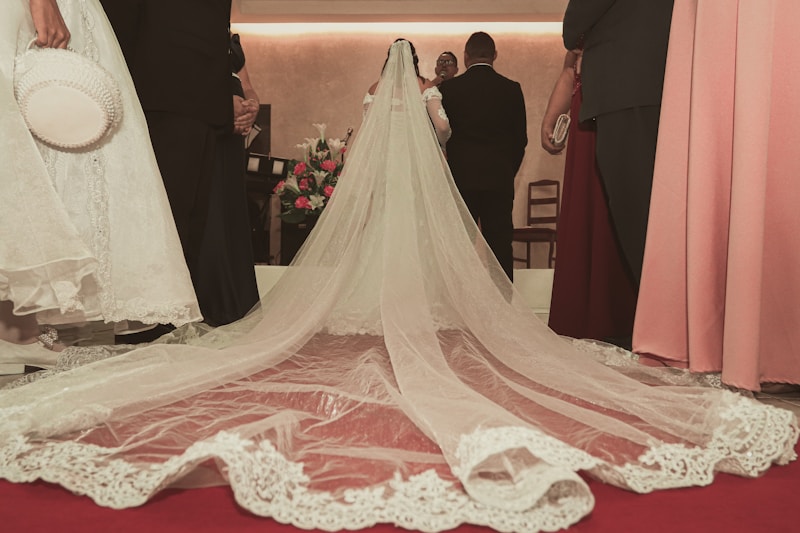Unlocking the Magic: Collaboration Between Bride and Designer in Dress Making
Unlocking the Magic: Collaboration Between Bride and Designer in Dress Making
The Art of Bridal Collaboration
Creating the perfect wedding dress is a journey that intertwines the dreams of the bride with the expertise of the designer. The collaboration between bride and designer in dress making is crucial for transforming visions into reality. This intricate partnership involves understanding preferences, tastes, and styles, ensuring that the final piece is not just a dress but a treasured item that encapsulates memories and emotions.
Understanding the Role of the Bride
The bride plays a pivotal role in the collaborative process. She brings her unique vision to the table, influenced by her personality, wedding theme, and cultural background. Whether she's inspired by a classic vintage look or a modern minimalist style, communication is key. Here are some important factors for brides to consider:
- Personal Style: What does she typically wear? How can this be incorporated into her dress?
- Wedding Theme: Is it formal, casual, or themed? The dress must align with the overall vision of the wedding.
- Comfort: The bride should consider how the dress will feel throughout the wedding day.
The Designer's Expertise
Designers bring technical skills and artistic vision to the collaboration. They not only understand fabric and fit but also know current trends and how to tailor each piece to the bride's desires. Here are the key responsibilities of a wedding dress designer:
- Material Selection: Choosing the right fabric that enhances the design while aligning with the bride's comfort preferences.
- Sketching and Conceptualizing: Bringing the bride’s ideas to life through sketches and 3D models.
- Fitting Sessions: Organizing multiple fittings to ensure the dress compliments the bride's figure and allows for movement.
The Initial Consultation: A Critical Step
During the initial consultation, both bride and designer share ideas and inspirations. Pinterest boards, magazine clippings, and personal sketches are instrumental in this phase. This is where the foundation for collaboration is built. Record keeping is vital, as it allows the designer to refer back to the bride’s preferences. It's essential to discuss:
| Topics to Cover | Details |
| Style and Inspiration | What styles does the bride like? Any specific designers or trends? |
| Budget | What is the budget for the dress? This can guide fabric selections. |
| Time Frame | When is the wedding? How much time is available for making adjustments? |
Design Development: Bringing the Vision to Life
After the consultation, the designer will create a series of sketches based on the discussed ideas. Feedback at this stage is crucial; adjustments can still be made to ensure the dress meets the bride’s expectations. This iterative process can include:
- Choosing Fabrics: Selecting fabrics that match the desired look and comfort level.
- Color Swatches: Confirming the shade of fabric to match the wedding theme.
- Design Elements: Discussing elements like lace, beading, and embellishments.

Fittings: The Final Touches
Fittings are perhaps the most exciting part of the process. This is when the dress truly comes together. Designers take notes on fit and comfort during each fitting. The bride's input is essential at this stage. It’s important for her to:
- Provide honest feedback on every aspect of the dress.
- Wear appropriate undergarments for the final fittings.
- Practice movement in the dress to ensure it's comfortable for the day.
Addressing Common Concerns
Throughout this collaboration, both brides and designers may have concerns. Here are common issues and how to address them:
- Alterations: Discuss potential alterations early on to avoid last-minute surprises. It’s common for alterations to take several weeks, so plan accordingly.
- Budget Overruns: Keep open lines of communication about the budget; adjustments to design can impact the final cost.
- Time Management: Always leave space for unforeseen delays in the production process.
The Emotional Aspect of Dress Making
The collaboration between a bride and designer is not just technical; it’s deeply emotional. This dress represents one of the most significant days of the bride's life. Designers must empathize with the bride’s feelings, ensuring a supportive atmosphere. It’s essential for brands to understand the deeper significance behind wedding dresses. They must listen actively, ask probing questions, and ensure the bride feels valued throughout the process.
Conclusion: Creating Timeless Memories
The collaboration between bride and designer in dress making is an enriching experience that results in unique, timeless pieces. This process goes beyond selecting fabric and sewing techniques; it involves building trust and understanding. By fostering effective communication, respecting each other's vision, and maintaining a balance between creativity and practicality, both parties can achieve extraordinary outcomes.
In summary, brides should focus on articulating their vision while remaining open to the designer's expertise. Designers, on the other hand, should strive to cultivate an environment where brides feel comfortable sharing their thoughts and concerns. The final wedding dress will not only be a reflection of the bride’s style but also a symbol of the collaboration and trust developed throughout the journey.
Final Tips:- Stay organized throughout the process; keep notes and documents related to your dress.
- Communicate frequently with your designer to ensure that both of you are on the same page.
- Remember to enjoy the process—this is a celebration of love and partnership!
This journey of designing a wedding dress can be challenging yet rewarding. Through effective collaboration, the magical fusion of ideas results in a masterpiece that celebrates love and unity.
